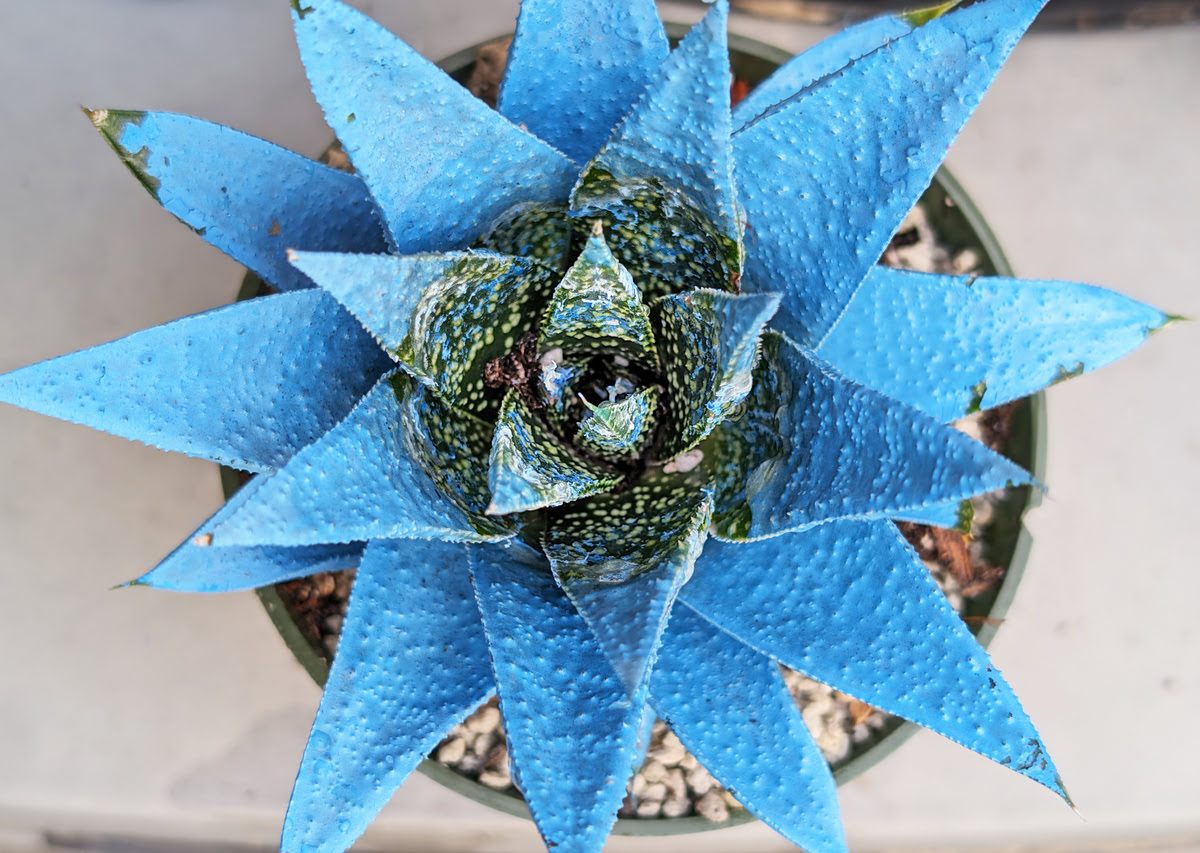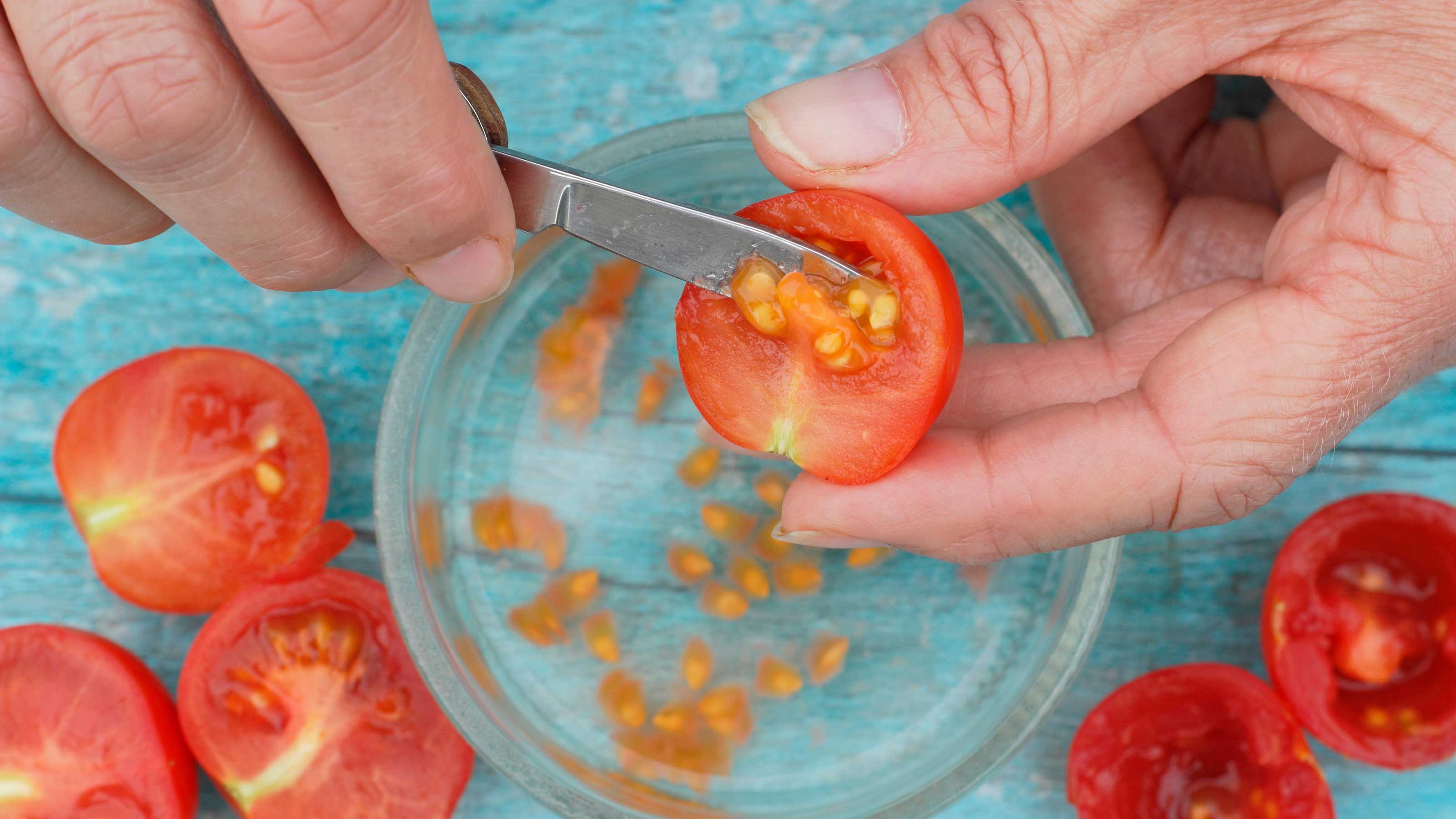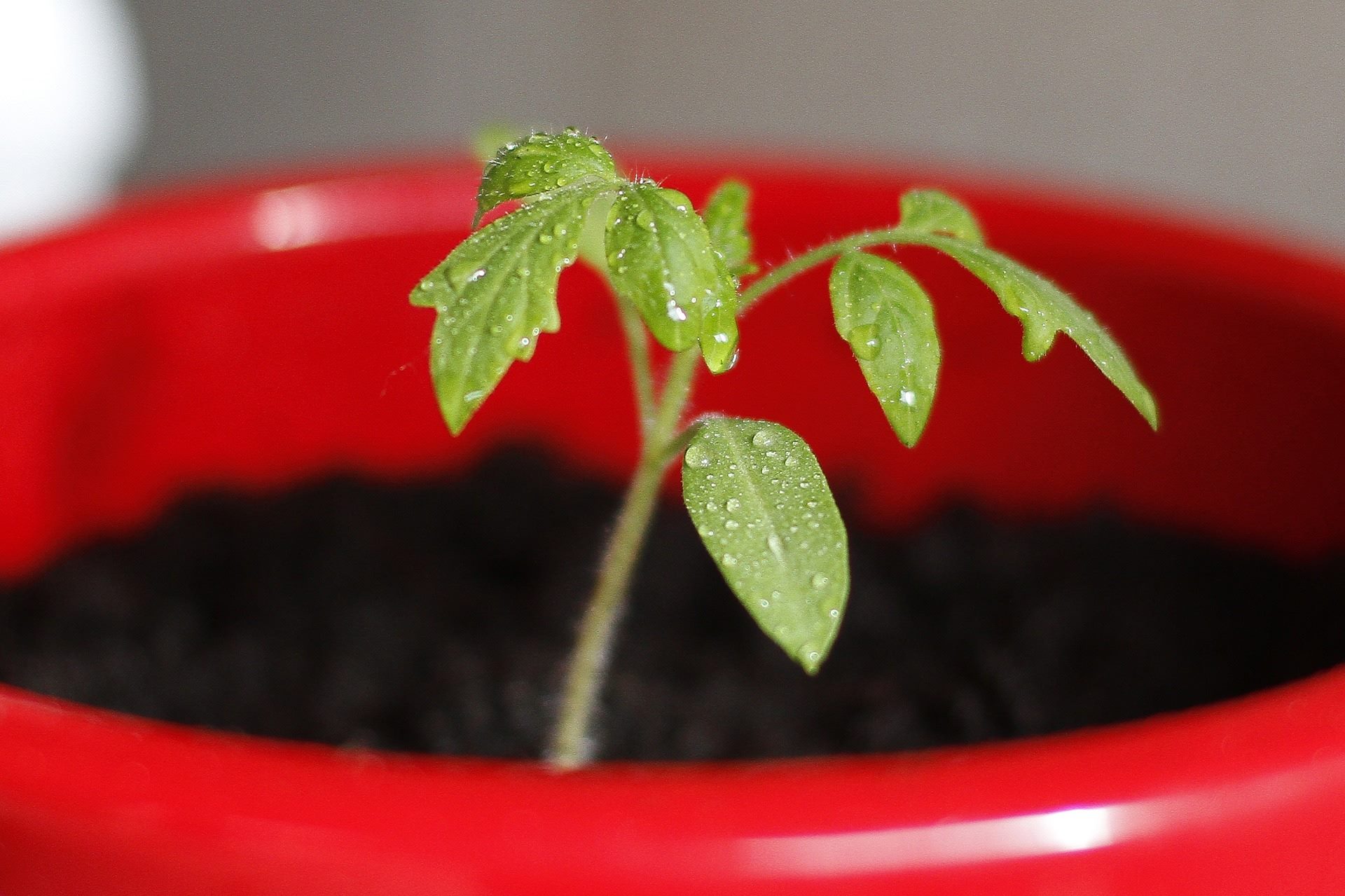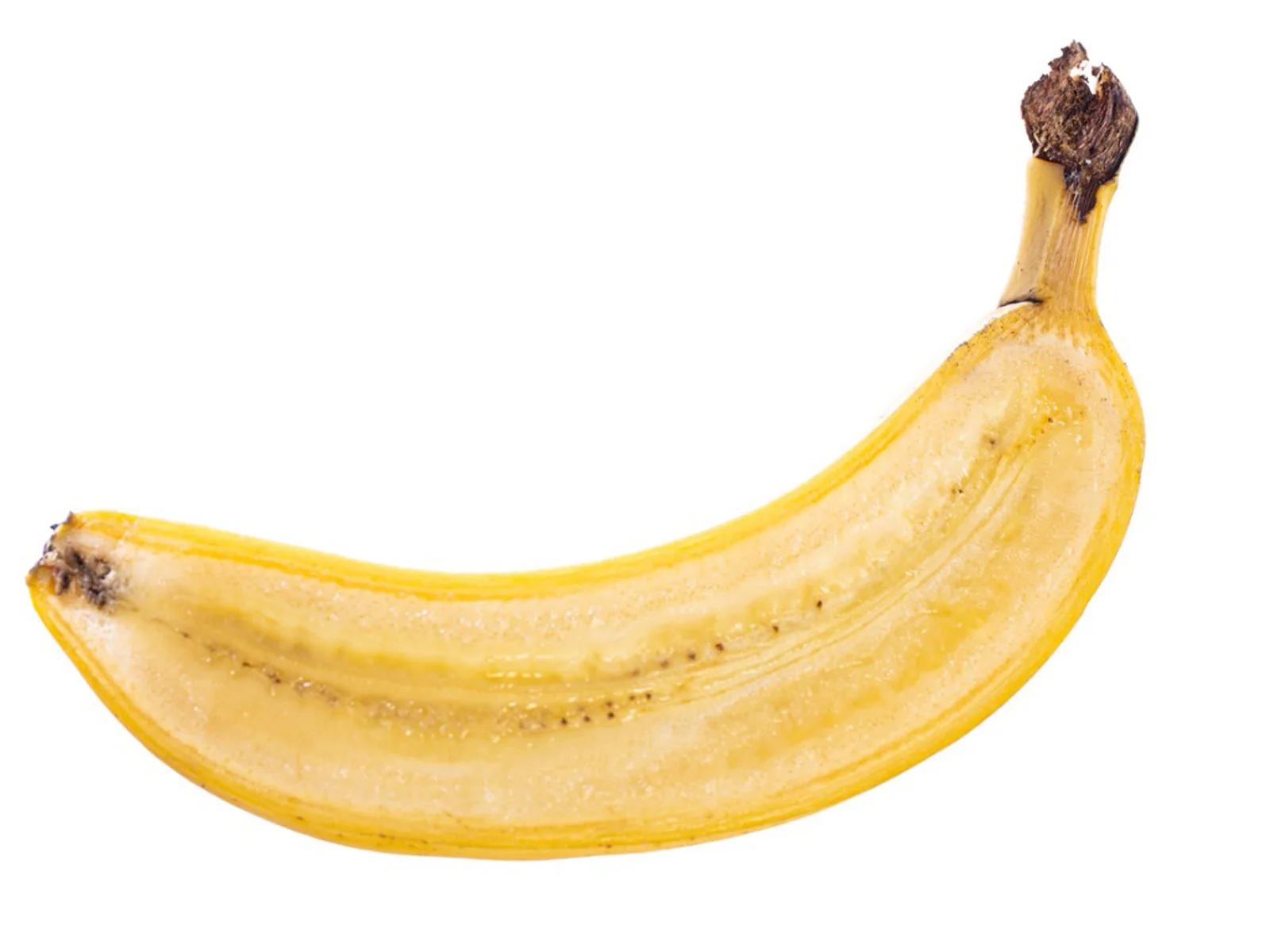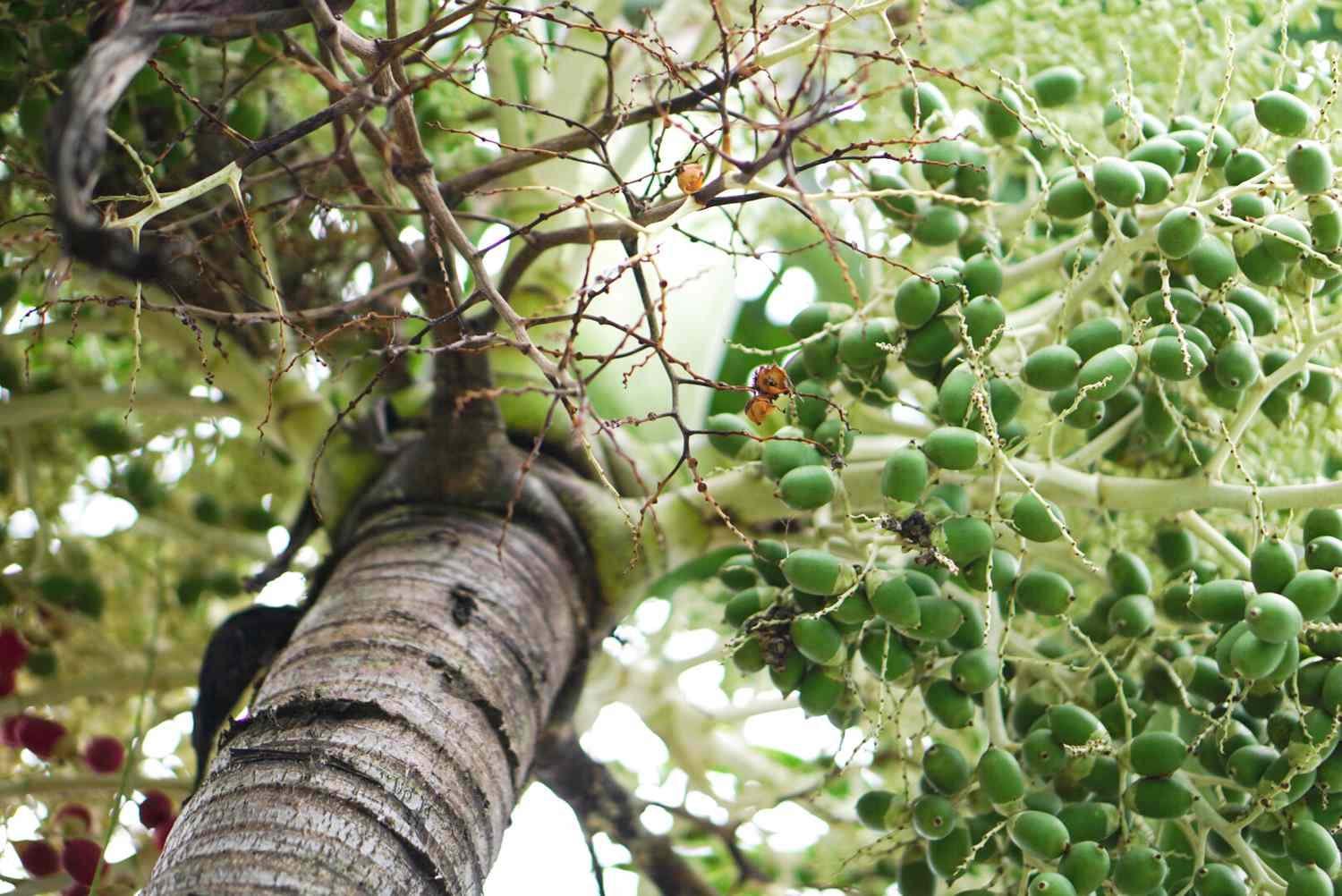Home>Types of Gardening>Edible Gardening>How To Remove Seeds From Tomatoes


Edible Gardening
How To Remove Seeds From Tomatoes
Published: September 17, 2023
Learn effective techniques for removing seeds from tomatoes in your edible gardening journey. Enhance your cooking experience with seed-free tomatoes!
(Many of the links in this article redirect to a specific reviewed product. Your purchase of these products through affiliate links helps to generate commission for Chicagolandgardening.com, at no extra cost. Learn more)
Table of Contents
Introduction
Welcome to the wonderful world of edible gardening! Growing your own fruits and vegetables is not only a rewarding experience, but it also allows you to enjoy the freshest and most nutritious produce right at your doorstep. One of the staples in many home gardens is tomatoes – juicy, vibrant, and oh-so-versatile. Whether you are planning to make a delicious tomato sauce, a refreshing salsa, or a flavorful salad, removing the seeds from tomatoes might be necessary.
While some enjoy the added texture and flavor that tomato seeds bring to their dishes, others prefer a smoother consistency without the seeds. Whatever your preference may be, this article will guide you through various methods of removing seeds from tomatoes. So, get ready to roll up your sleeves and embark on a culinary journey!
Before we dive into the different methods, it’s important to note that there is no right or wrong way to remove tomato seeds. It ultimately depends on your personal preference and the recipe you are following. Some methods are quick and straightforward, while others require a bit more time and effort. Feel free to explore and experiment to find the technique that works best for you.
Now, let’s get started with the first method – using a spoon.
Method 1: Using a Spoon
If you prefer a simple and efficient method to remove tomato seeds, using a spoon is the way to go. This method works well for small to medium-sized tomatoes.
Here’s how you can use a spoon to remove tomato seeds:
- Start by cutting the tomato in half horizontally, creating two equal halves.
- Hold one tomato half over a bowl or sink, with the cut side facing down.
- Using a spoon, gently scrape out the seeds and pulp from the tomato. Be careful not to put too much pressure and damage the flesh.
- Continue scraping until most of the seeds and pulp have been removed.
- Repeat the process with the other tomato half.
Once you have removed the seeds, you can proceed to chop, slice, or dice the tomatoes according to your recipe.
This method is quick and hassle-free, making it a great option if you only need to remove a small number of seeds. However, keep in mind that it may not be ideal for larger tomatoes with a lot of seeds. In such cases, you may need to use alternative methods to ensure efficient seed removal.
Now that you’ve mastered the art of using a spoon to remove tomato seeds, let’s move on to the next method – the straining method.
Method 2: Straining Method
If you’re working with a large quantity of tomatoes or want a more thorough removal of seeds, the straining method is a great option. This method allows you to separate the seeds from the tomato flesh using a strainer or sieve.
Here’s how you can use the straining method to remove tomato seeds:
- First, start by cutting the tomatoes into quarters or smaller pieces.
- Place the sliced tomatoes into a strainer or sieve, ensuring that it is set over a bowl or sink to catch the liquid.
- Using a spoon or your hands, gently press down on the tomatoes to extract the juice and seeds through the strainer.
- Continue pressing and scraping the tomatoes against the strainer until most of the seeds and juice have been separated.
- Once all the liquid has been strained, discard the seeds and pulp collected in the strainer.
The remaining tomato flesh can now be used in your recipe without any seeds. If necessary, you can further chop or blend the strained tomatoes for a smoother consistency.
The straining method is particularly useful when you plan to make tomato sauce, purees, or soups, where removing the seeds ensures a smoother texture. It may take a bit more time, but the effort is worth it.
Now that you’re familiar with the straining method, let’s move on to the next technique – the squeezing method.
Method 3: Squeezing Method
The squeezing method is a practical and hands-on approach to removing tomato seeds. It involves manually squeezing the tomato to separate the seeds from the flesh. This method is especially useful when dealing with smaller tomatoes or when you want to maintain the tomato’s natural juice.
Here’s how you can use the squeezing method to remove tomato seeds:
- Start by selecting ripe tomatoes that have a good amount of moisture.
- Hold a tomato in your hand, placing your fingers around the top where the stem was attached.
- Gently squeeze the tomato, applying even pressure to the sides.
- As you squeeze, the seeds will start to separate from the flesh and collect on the surface of the tomato.
- Continue squeezing and rotating the tomato until most of the seeds have been released.
- Once the majority of seeds have been extracted, use your fingers or a small spoon to scoop out any remaining seeds.
Repeat the process with each tomato you want to deseed, and you’ll end up with seed-free tomato flesh ready for your recipe.
The squeezing method is a simple yet effective way to remove seeds, as it preserves the natural juices of the tomatoes. It can be quite satisfying to feel the seeds release from the flesh, and it doesn’t require any additional tools or equipment.
Now that you’ve mastered the art of squeezing tomatoes, let’s move on to the next method – the blending method.
Method 4: Blending Method
The blending method is a fantastic option when you want to achieve a smooth and seedless tomato puree or sauce. Using a blender or food processor, this method allows you to extract the seeds and create a seamless texture in your tomato-based dishes.
Here’s how you can use the blending method to remove tomato seeds:
- Start by washing and removing the stem from the tomatoes.
- Cut the tomatoes into smaller chunks or quarters, depending on the size of your blender or food processor.
- Place the tomato pieces into the blender or food processor.
- Pulse or blend the tomatoes on a low or medium setting for a few seconds until they reach a puree-like consistency.
- Pour the tomato puree into a fine-mesh strainer set over a bowl or sink.
- Using a spatula or the back of a spoon, press the puree against the strainer, scraping back and forth to separate the liquid from the seeds.
The strained liquid will pass through the strainer, leaving the seeds behind. You can discard the collected seeds and continue to use the smooth tomato puree in your recipe.
The blending method ensures a seedless and velvety texture, making it an ideal choice for soups, sauces, and tomato-based dishes that require a consistent, lump-free consistency.
Now that you’re familiar with the blending method, let’s move on to the next technique – the roasting method.
Method 5: Roasting Method
The roasting method is a unique and flavorful way to remove tomato seeds while adding a rich and smoky depth to your dish. This method is particularly popular for making roasted tomato sauces, salsas, or adding roasted tomatoes to salads or sandwiches.
Here’s how you can use the roasting method to remove tomato seeds:
- Preheat your oven to a medium-high temperature, around 375°F (190°C).
- Start by washing and slicing the tomatoes in half.
- Place the tomato halves on a baking sheet or roasting pan, cut side up.
- Drizzle the tomatoes with olive oil and sprinkle with salt and pepper to enhance the flavor.
- Roast the tomatoes in the preheated oven for about 30 to 40 minutes or until they become soft and the skins start to wrinkle.
- Once the tomatoes have cooled slightly, use a spoon or your hands to gently remove the seeds. The roasting process makes the seeds easy to separate from the flesh.
After removing the seeds, you can chop, blend, or use the roasted tomato flesh in your recipe. The roasted flavor will add a delicious dimension to your dishes.
The roasting method not only removes the seeds but also intensifies the flavor of tomatoes by caramelization. It’s a fantastic way to enhance the taste of your recipes and add a smoky touch.
Now that you’ve learned the roasting method, you have a variety of techniques to choose from for removing tomato seeds. Experiment with these methods to find the one that suits your needs and culinary preferences.
Conclusion
Congratulations, you are now well-versed in several methods of removing seeds from tomatoes! Whether you prefer using a spoon for a quick seed removal or opt for the roasting method to add a flavorful twist, each technique offers a unique way to achieve a seedless tomato base for your culinary creations.
Remember, the method you choose depends on the size of the tomatoes, the quantity of seeds you want to remove, and the desired texture and flavor of your dish. Using a spoon is ideal for small to medium-sized tomatoes, while the straining method works best for larger quantities. The squeezing method offers a hands-on approach, while blending provides a smooth and consistent puree. And if you’re looking for a smoky flavor, the roasting method is perfect.
As you embark on your edible gardening journey, don’t be afraid to experiment and adapt these methods to suit your needs and preferences. Each approach provides an opportunity to unleash your creativity in the kitchen and create delectable dishes using your homegrown tomatoes.
So, the next time a recipe calls for seedless tomatoes, you’ll be well-equipped with the knowledge to remove those pesky seeds and savor the pure essence of this versatile fruit. Enjoy exploring the endless culinary possibilities that await you as you continue to embrace the joys of edible gardening!

